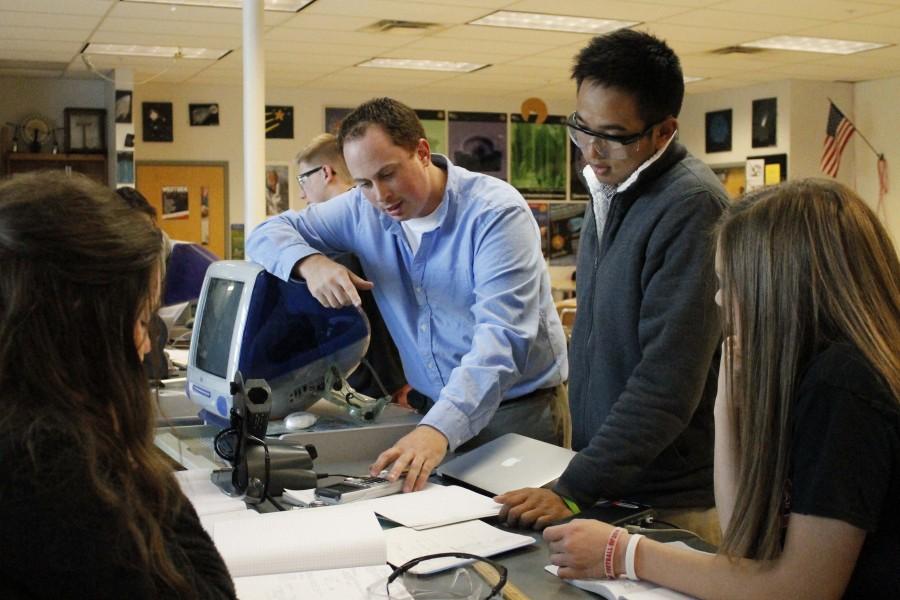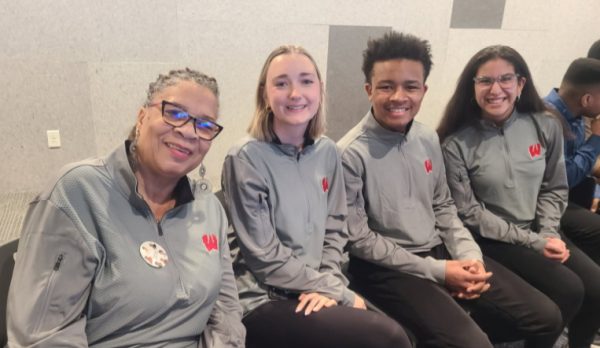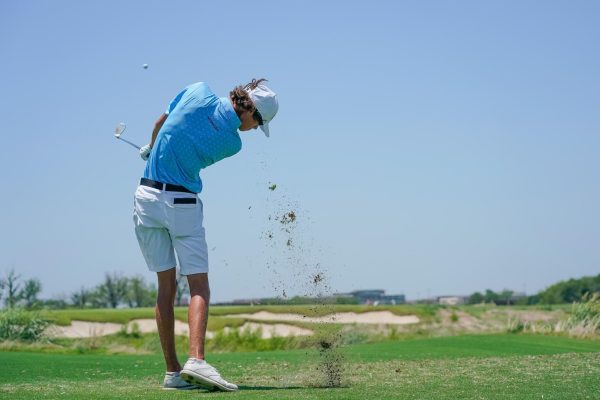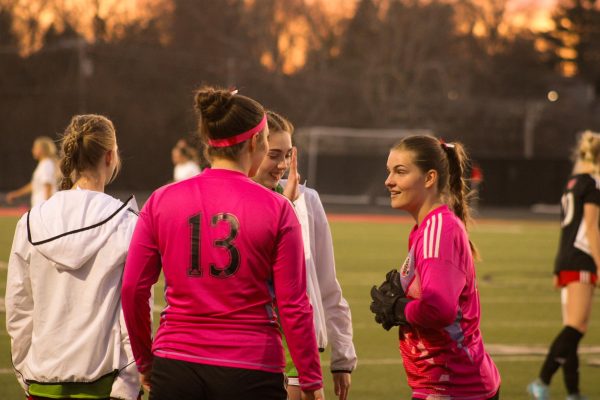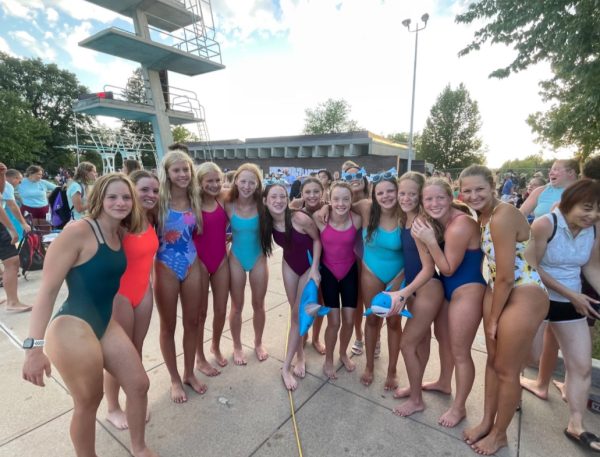Physics teacher uses teaching style to make learning more enjoyable for students
An axe crushes a cinder block sitting on a bed of nails laying on the chest of chemistry teacher Mike Fauss. The block breaks, and Fauss is not harmed, because of physics. This lab demonstrated the idea of Newton’s Laws and is one of the many demonstrations teacher Benjamin Powers sets up for his students on a daily basis.
Powers became a physics teacher in 2010. “I enjoyed helping students come to understand how our universe works and I feel that science is an area that we need more youth going into,” Powers said. “If I could spark an interest in a few young minds, I will have fulfilled my goal.”
Majors that involve engineering or science are less pursued by students going into college. Both general sciences and engineering related fields have only had a little over a 20 percent growth rate in the past seven years. Science and engineering fields both are predominately male. Only 18.2 percent of women receive a bachelor’s degree for engineering.
According to Powers, a normal week is a “tornado of helping students, setting up and tearing down labs and creating authentic experiments in class that ultimately result in a very rewarding job.”
Powers is a firm believer that students learn better by experiencing something for themselves. He states that students learn better hands on and need to experience science and how it is practiced.
“Students need to be left with questions and need to be pushed with those questions so they can ultimately come to an understanding on their own,” Powers said.
Even with the challenge of having a newborn at home, Powers manages to come to school everyday and do his best to make lessons enjoyable for students. His lessons that are on slide shows are filled with memes and other humorous material to make learning physics more enjoyable. He also comes up with a new lab every week to help students grasp a deeper understanding of the material being learned in class.
“Any lab where students have to face a misconception would be my favorite,” Powers said.
Last month, students in AP Physics 1 did a lab titled “James Bond Lab.” In the lab, students had to calculate how far back they had to start a toy car from a drop point, so a ball dropped from a certain height would hit the car. While this might seem easy by simply doing just trial and error, there is a lot of equations that go into calculating this problem just right. Even if students didn’t hit the target on their first try, they had to make adjustments and reevaluate their process to truly experience the scientific process.
The science department has received multiple grants over the years including a few underwater robots physics teacher Judith Stucky was awarded in the past months.
“If I had unlimited funds I would get new vernier lab equipment, and sensors so that the students have better quality equipment to work with,” Powers said.
The AP exam is something AP Physics 1 and 2 spend all year preparing for. Last year was the first year the course AP Physics 1 was offered and the AP test had a 40 percent pass rate.
“This year to prepare there will be more practice with AP problems, in depth thinking with labs and more scenarios” Powers said.
Powers plans to use his idea that kids learn by experience to help students continue to excel in his class and to prepare them to preform well on the AP exam.
Your donation will support the student journalists of Omaha Westside High School. Your contribution will allow us to purchase equipment and cover our annual website hosting costs.


